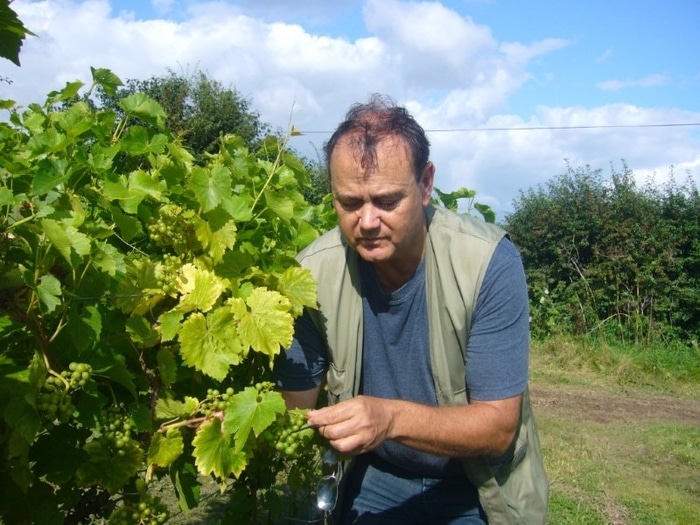Refine fertiliser plans with tissue testing – Vineyard – Rob Saunders, Chris Cooper
Tissue testing around next month’s key flowering period is a valuable tool for finetuning nutrition plans, providing it is used correctly, as Hutchinsons’ Rob Saunders and Chris Cooper explain ...
Many larger commercial vineyards routinely use petiole analysis to identify potential nutritional issues and tailor foliar nutrition to the results, but correct interpretation is paramount.
“Hidden hunger” is when a vine is lacking in certain nutrients early in the season, and this can be identified at sub-clinical level before foliar symptoms become visible. This gives growers an opportunity to rectify any problems before yield or grape quality is compromised.

Rob Saunders
Test data can be combined with soil analysis or scanning results to help identify the cause of any observed variability within vineyards, such as between different cultivars or across areas of varying soil type, allowing growers to manage the growth requirements more precisely to crop need.
Tissue testing may be particularly beneficial in newly established vineyards where crops need extra support as root structure develops.
Early timing
Early flowering is the key timing for tissue testing, although testing again at veraison can help evaluate the effectiveness of earlier nutritional strategies and fine-tune late nutritional sprays for optimal quality and build vine reserves for next season.
Petiole analysis has become the preferred test methodology, providing a snapshot of mobile nutrients moving towards the leaf blade, although other tests are available. This season Hutchinsons is evaluating a new comparative sap analysis, which compares nutritional levels in old and new leaves from the same plant.
Traditional sap analysis has been notoriously inaccurate for field-grown perennial crops, but this new test should bring greater accuracy by detecting deficiencies in older leaves first as nutrients are redirected to the growing point.
For flowering petiole analysis, test providers each have their own protocols, but generally a representative sample (e.g. a handful of 40 petioles) should be taken from the leaf opposite the bunch. Samples are taken along and down the rows, or from areas of vines showing a specific issue. The fresher the sample, the more accurate the results, especially for nutrients like nitrogen, so tests are best done in time for samples to reach the lab before the weekend. It typically takes around five working days for results to be returned.

Chris Cooper
Highlighting issues
Every vineyard is different, so tissue test results will reflect both the underlying soil properties and the site’s management.
Ameliorating vines with nutrients is common practice in vines grown on high-pH calcareous soils prone to nutrient “lock-up”. Similarly for sandy soils where leaching potential is high and pH is known to slip downwards, there is a greater risk of manganese and boron deficiency.
Applying boron in the run-up to flowering is fairly common practice for many growers and rightly so given the nutrient’s importance to pollination tube development and subsequent pollen viability.
Iron is very important early on as it is essential for chlorophyll formation and photosynthesis. To correct this, it is important to use the correct iron chelate on the soil and the leaf to enhance uptake.
Likewise, magnesium is needed for maintaining photosynthesis and deficiencies are often picked up by tissue testing, notably in young, recently established SO4 rootstocks.
Tissue testing also provides a good way of checking nutrient ratios are in balance to mitigate potential antagonism. High soil calcium for example, can reduce the availability of magnesium and potassium to plants.
Calcium itself is a relatively immobile nutrient, even in calcareous soils, but it plays a key role in strengthening the structure of cell walls, so an early application around flowering when cell division for berries is occurring could help improve resilience to botrytis later in the season.
While tissue testing provides very useful information for fine-tuning foliar nutrition programmes, results should be considered carefully. Results are typically presented using a traffic light system based on recommended thresholds for deficient, low, adequate and high/excessive levels of individual nutrients.
In the UK there are currently no defined cultivar standards for the exact amounts that constitute an “optimal” or “deficient” level, so results should be used as a guide and discussed with your agronomist. Regular testing helps determine whether there are underlying issues with certain nutrients, and provides a way of monitoring the effectiveness of any management changes.